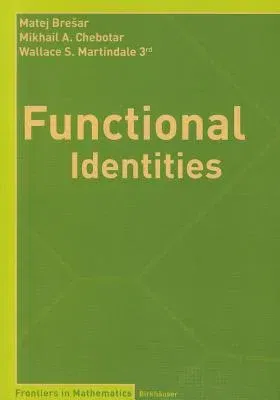A functional identity (FI) can be informally described as an identical
relation
involving(arbitrary)elementsinaringtogetherwith("unknown")functions;more
precisely,
elementsaremultipliedbyvaluesoffunctions.ThegoalofthegeneralFI theory is
to determine the form of these functions, or, when this is not possible,
to determine the structure of the ring admitting the FI in question.
This theory has turnedouttobeapowerfultoolfor
solvingavarietyofproblemsindi?erentareas. It is not always easy to
recognize that the problem in question can be interpreted through some
FI; often this is the most intriguing part of the process. But once one
succeeds in discovering an FI that ?ts into the general theory, this
abstract theory then as a rule yields the desired conclusions at a high
level of generality. Among classical algebraic concepts, the one of a
polynomial identity (PI) seems to be, at least on the surface, the
closest one to the concept of an FI. In fact, a PI is formally just a
very special example of an FI (where functions are polynomials).However,
the theoryof PI'shasquite di?erent goalsthan the theory of FI's. One
could say, especially from the point of view of applications, that the
twotheoriesarecomplementaryto eachother.Under somenaturalrestrictions,
PI theorydealswithringsthatareclosetoalgebrasoflowdimensions,
whileFItheory gives de?nitive answers in algebras of su?ciently large or
in?nite dimensions.


